I’ve used hot and cold smoking in every way possible, both direct and indirect hot smoking of many foods, not just meat. However, meat is often the focus on smoking to give the food a different complex angle or to mellow the flavor of stronger meats.
Below, you’ll find a helpful definition of each smoking style and a breakdown of the various techniques.
After a few decades, there are some subtle aspects; I’ve found that once you understand the process, it does take some practice to ‘fine-tune’ any of the methods. It’s not something you can follow from a step-by-step list.
I’ve found you have to use your senses more, such as looking, smelling, and sometimes feeling.
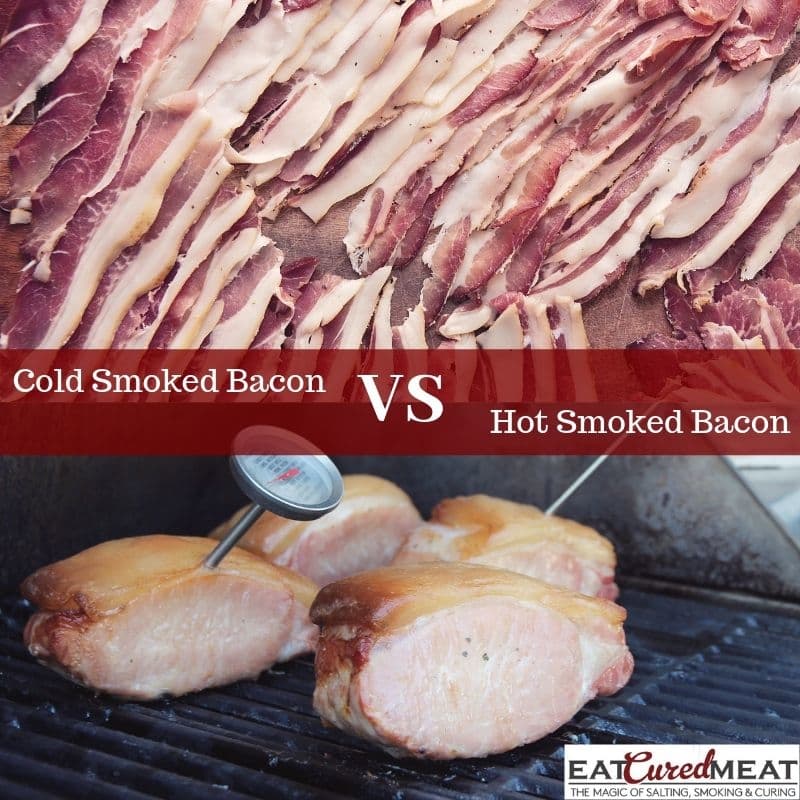
What is the Difference Between Hot Smoking and Cold Smoking?
Hot Smoking involves cooking whilst smoke is inside the smoking chamber. It can be done with direct or indirect heat. If smoking meat, the internal temperatures must be met to reach a safe cooked level. Depending on the meat type , this is a minimum internal meat temperature of 145°F/63°C).
In particular indirect low-temperature hot smoking (commonly known as ‘Low and Slow Smoking’, meat fiber and tissue are broken down with a internal temperature reached of of 90-100°C/194-212°F
Cold Smoking is performed at a temperature below 30°C/86°F, many foods not just meat can be cold smoked. Other factors to consider when cold smoking are airflow and humidity inside/outside the smoking chamber.
There are many delicious aspects of smoking meat, which has been used for millennia.
I will try to define both hot and cold smoking in detail to inspire and give some idea of what you need. I will highlight helpful ideas on how to smoke meat at home easily.
Hot and Cold Smoking
Whether you call it ‘low & slow’ or hot smoking, it’s similar but different.
Often, when hot smoking – you are either salt-curing dry/brining
Since the meat has been cured, the salt in the meat retains some moisture, which is why it doesn’t or shouldn’t dry out when you are hot smoking.
However, the key to hot smoking is using a cooking temperature to cook the meat while adding smoke flavor from a smoke source.
I have encountered a lot of variations regarding recipes, styles, and techniques; hopefully, you can pick up some tricks & tips.
But in essence, the process is the same. You want to maintain approx. 100° -140°C / 212°-280°F cooking temperature. Using hardwood / deciduous wood, depending on the technique – wood dust, pellets, chips, or chunks of wood may be used.
Anything sappy or ‘softwood’ does not work for smoking meat due to the tar & toxins.
I have found the most popular hot smoking to be fillets of fish such as trout or salmon.
Tip: If you want universal woods, apple, grape, or cherry wood seems to be mild and sweet, which will go with most meat flavors. You can’t go wrong with Applewood for most meat-smoking projects, in my experience.
Smoking Technique Table
| Technique | Smoker Options | Celius/Metric | Fahrenheit/Imperial | Notes |
|---|---|---|---|---|
| Direct Heat Hot smoking | Wok Smoking, Portable Smoker | 90-135°C | 195-275°F | Often, meat is salt cured/brined before to hold moisture in the meat during the cooking/smoking |
| Indirect Hot Smoking | Electric/Propane Smoker, Charcoal (Kettle, Drum, Barrel), Offset Wood/Charcoal, Pellet Grill Smoker, Grill – Indirect with Add-On Smoker, Smokehouse | 100–160°C | 210-320°F | Often, meat is salt-cured/brined before to hold moisture in the meat during the cooking/smoking |
| Low & Slow Texas BBQ, | Electric/Propane Smoker, Charcoal (Kettle, Drum, Barrel), Offset Wood/Charcoal, Pellet Grill Smoker, Grill – Indirect with Add-On Smoker, Smokehouse | 90-150°C | 195-300°F | Low temperature, with indirect heat. Inside the chamber, smoke to flavor |
| Cold Smoking | Pellet Tube Smoker, Smoker Generator, Maze Smoker. Smokehouse, Tunnel Smoker | 5-30°C | 41°F – 77°F | Cold smoking often involves drying meat and flavoring. It can be used for preservation also. |
Examples of Hot and Cold Smoking
Hot Smoked (salt cured)
- Hot Smoked Bacon
- Hot Smoked Kranksy Sausage
- Hot Smoked Ham (Deli)
- hot Smoked Pastrami
- hot Smoked Turkey
Cold Smoking (salt cured meat)
- cold smoked bacon
- cold smoked salmon
- cold smoked kipper (UK) – Cooked before eating
- cold smoked bacon
- cold smoked dry-cured salami
- Cold smoked – salt, mushrooms, vegetables, spices, eggs, chocolate
Low and Slow Hot smoking (no salt curing, only salt seasoning/rub applied)
- Smoked Pulled Pork
- Smoked Beef Brisket
- Smoked Pork Ribs
Some styles of hot smoking are indirect, with heat surrounding the food. Also, the smoke is in an enclosed area with the food. Ideally, it is well insulated and has a controlled airflow. However, it can also be done on a regular hooded grill (with accessory) or using a wok/pot.
There are also some direct heating hot smoking options, excellent for smoking less dense meats like fish over a shorter time of under 15 minutes.
Hot Smoking
Key Factors
- Consistent temperature, approximately – it doesn’t have to be precise.
- Some airflow control can be of assistance, but it isn’t essential
- The ability to turn up or down the heat can be helpful (fire management with non-thermostat styles)
- Moisture in the smoking chamber can help keep meat from drying on the exterior.
- Direct Heat Hot Smoking
Specifically I wrote an article on how to hot smoke meat here.
Here is a link to the hot smoking article category page on this site.
Tea (Hot) Smoking
Rice and aromatics have been used across Asian cultures for smoking for a long time.
This is a fast method; I would call direct heat hot smoking since the meat and smoking rice mixtures are in the same area.
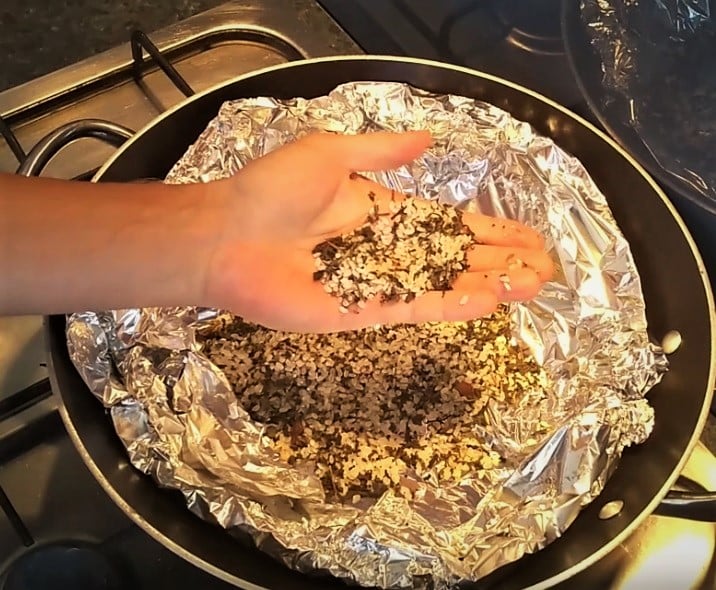
You can smoke in a regular kitchen with a wok. This can work using a tea mixture of tea, spices, and sugar. It’s a traditional Chinese method. The wok stovetop tea method involves a direct heat source. It favors smaller meat or other types of food.
From my experience, it does create a reasonable amount of smoke. Potentially, it could get a bit difficult for some people. Extraction fans can only do so much; some smoke detectors will likely go off – please be careful.
Great for fish, this gives a very different flavor profile than wood-based smoking.
Portable Direct Hot Smoking
Another direct hot smoking fast style.
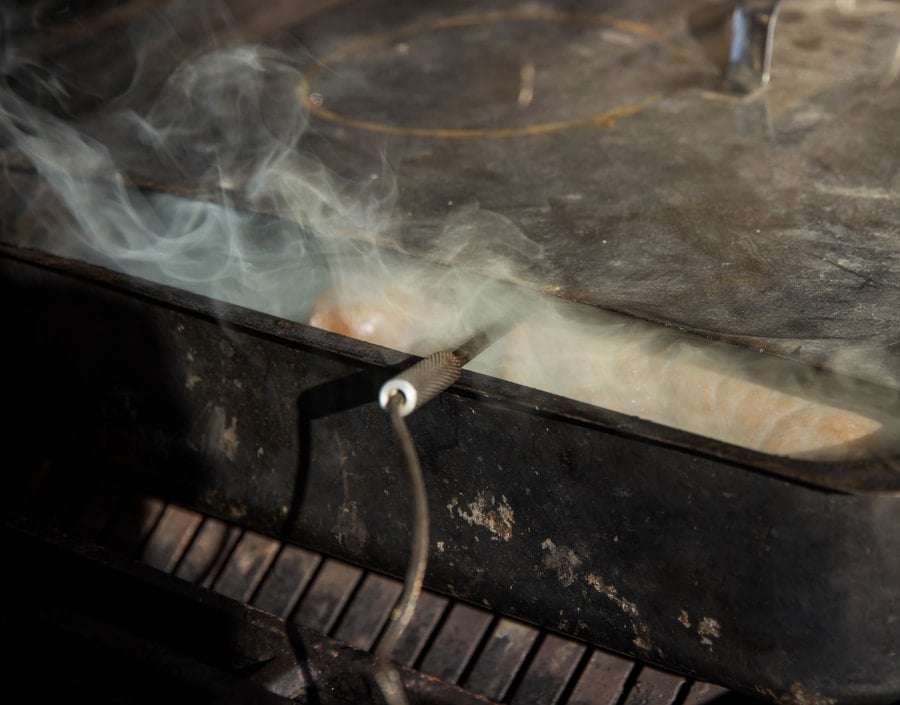
I use many types, and portable smokers are a quick and easy way to hot smoke from a direct heat source. BBQ or propane burner, for instance. These smokers can be great if you want to smoke something in the backyard, beach, river, or camping.
You don’t need a lot for the smoker; half a handful is plenty for a quick fish fillet smoking in a portable smoker.
It can run on a campfire, a gas/propane heat source, or denatured Alcohol burners.
Indirect Hot Smoking
Hooded Grill Hot Smoking
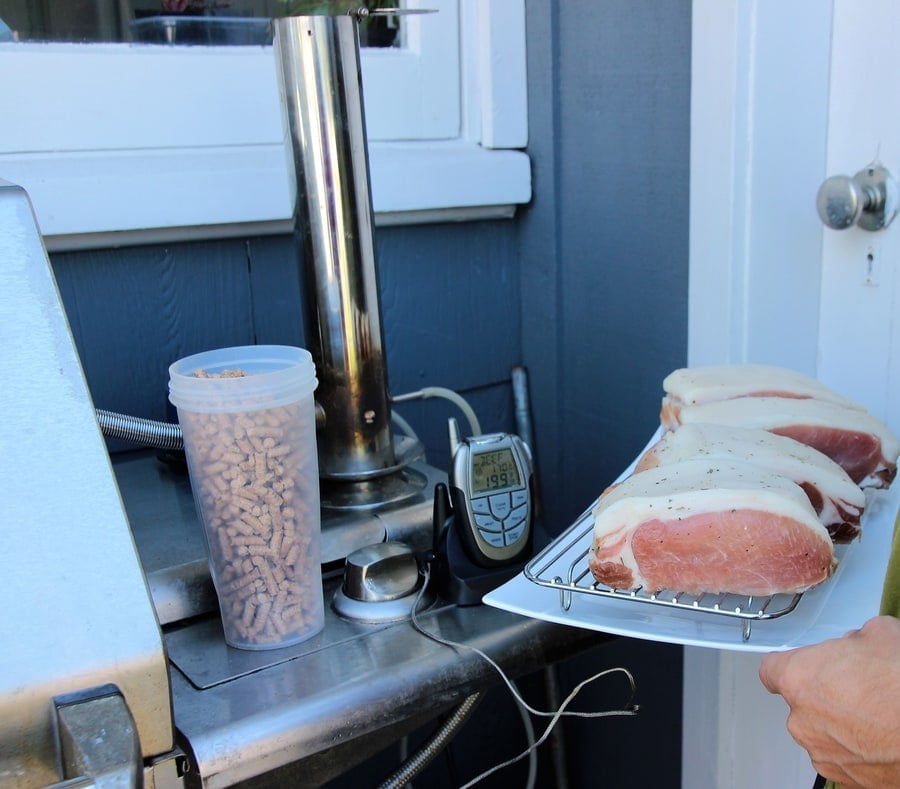
There is many options to create smoke and indirectly cook on the BBQ, whether it’s hot smoked bacon, hot smoked turkey, or delicious smokey pastrami. This can all be done on a BBQ.
I have had excellent outcomes using a hooded grill with a smoking device (link to full guide). I wrote about the many methods in this link. Remember, you must have a gap in the hood so the heat doesn’t build up too much. This is designed to make the BBQ safe.
I’ve used many hooded grills with no heat turned on for cold smoking. You need a maze, pellet tube, or smoke generator attachment to pump the smoke in. It depends on the airflow as well as what area you can use.
Electric Heat Smoking
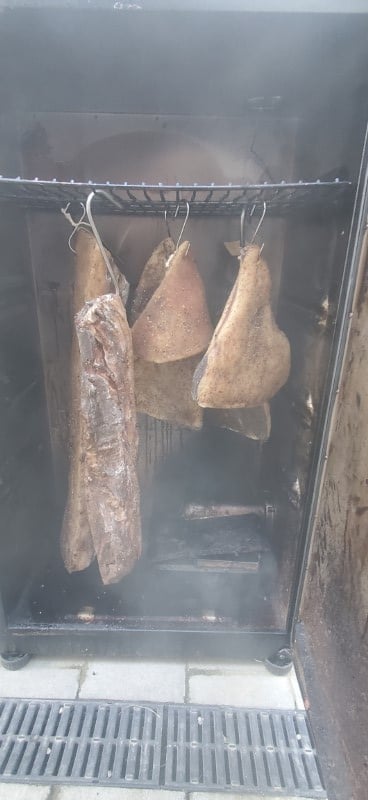
I have quite a few, so here are some guides on electric smokers:
- A thermostat can make smoking a lot easier (standard with electric, gas/propane slightly different)
- Some have specific ‘smoking’ biscuits, which are convenient and auto feed – but an ongoing product you need to buy ( I don’t like the restriction)
- Water pan either built-in or you can add helps with ‘slow n low’ style hot smoking.
An outdoor baking oven with an element for heat, a smoking tray, or a tube to add the smoke flavor.
These are some of the easiest-to-use hot-smoking devices.
Pellet Grill Smoker
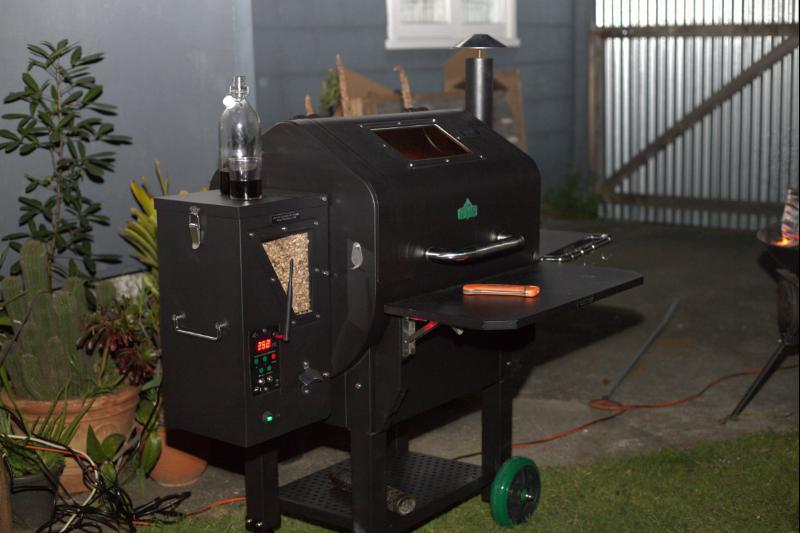
I’ve written for pellet grill smoker companies and put together a few types. Used them extensively.
A pellet grill smoker is an advanced electric smoker that feeds wood pellets through an auger into a ‘burning chamber/pot.’ The system is also thermostat controlled for effortless control.
However, you have to buy expensive wood pellets for the cost of convenience.
Charcoal Heating Source Smoking
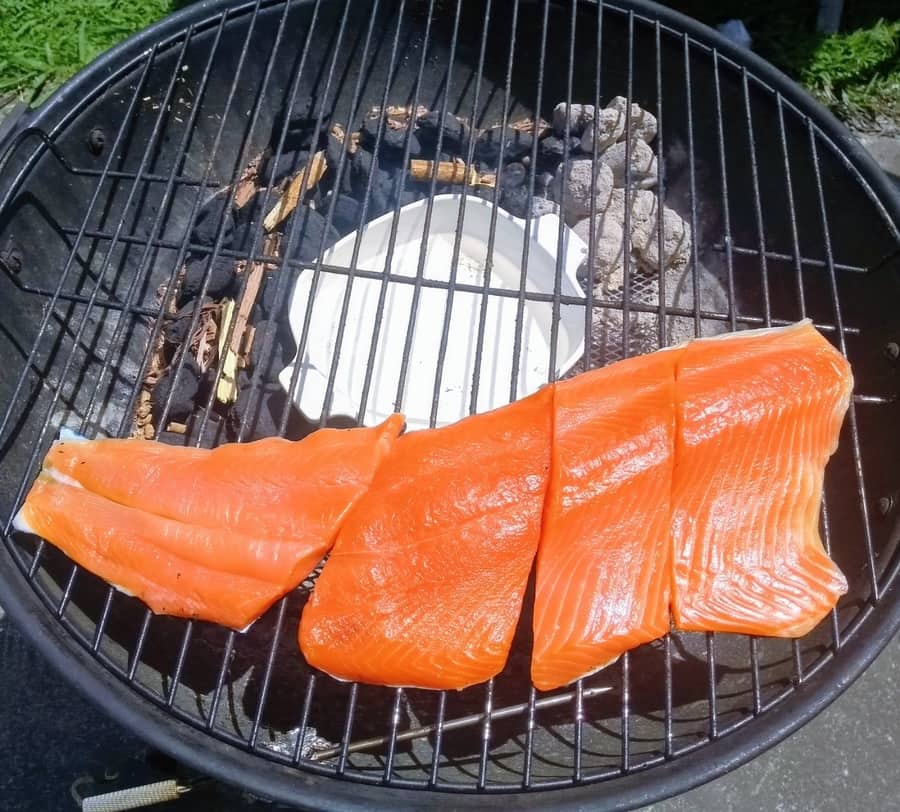
This covers many shapes of hot smoker
- Kettle smoker
- Drum smoker
- Barrel smoker
- Ceramic Insulated Egg
- Offset Smoker (though it can be run on wood chunks instead)
Either used indirect heat for low-temperature cooking/hot smoking or some of these types like a kettle, ceramic eggs, and some offset smokers can also be direct heat grillers and very hot searing temperatures if set differently
Low & Slow Indirect Hot Smoking
Texas-style barbecue is a classic way of smoking meat. It is based on indirect heat and provides a good-quality flow of smoke. Generally, it is low and slow over an extended period.
It’s about 2-20 hours of consistent heat and smoke.
Early European Czech & German settlers introduced smoking meat for preservation during colonization in the USA. Then, it has morphed in more recent years into what is now called ‘Low and Slow.’
Any indirect hot smokers above could be used for Low and Slow Smoking.
Key Factors
The key factor is keeping the low-temperature heat consistency, although it doesn’t need to be precise.
Hot Smoking and Low and Slow Hot Smoking are entirely different from cold smoking.
Often, generically, people think all ‘smoked’ foods are the same; this is a widespread fallacy I’ve seen over many decades.
Enough moisture in the cooking/smoking chamber means the outside doesn’t dry out as much.
This cooking style is about breaking down the tough fiber with slow cooking to melt collagen and fat.
Creating a rich, moist mouthfeel.
Cold Smoking
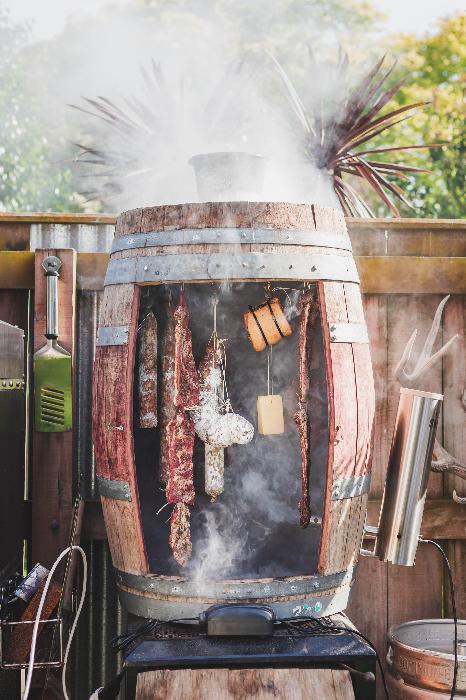
Fully salt-curing the meat with a dry cure or salt brine is the first step and is incredibly important.
However, if the outside of fresh meat is dry, instead of curing for preservation and cold smoking. I’ve cold smoked beef and pork to add some smoke flavor just before traditionally grilling or baking (not that much smoke flavor exists from short cold smoking sessions).
Cold smoking is for more experienced meat curers; you will want to master hot smoking first.
It’s a long process, from 5 hours to 14 days. The key is temperature; it has to be done under 80° F / 25° C. The smoke dries the meat and removes much moisture, intensifying the flavor.
It is performing a long-term preserving effect.
I often put the meat in the fridge overnight and continue the cold smoking the next day. Resting can assist a lot in enhancing the smoke flavor, long session aren’t advisable for balancing flavor.
Key Factors
What makes cold smoking fascinating for me, whilst also being a craft to learn, is that it has environmental factors as well as the apparatus and method used.
- Wood
- Cold smoking device
- Salt
- Meat
Environmental Factors
- Temperature Inside Smoking Chamber
- Temperature Outside Smoking Chamber
- Airflow In and Airflow Out (Vented?)
For temperature and tips about cold smoking, I wrote this article.
Size and distance from the smoke to the meat can also influence outcomes. Moisture on the meat during cold smoking can also affect how much smoke vapor adheres to the meat.
If you want
- Making sure the meat is 100% cured is the most important point
- Quality of the meat -freshness for meat curing is important
- Having ‘thin’ consistent smoke, you do not want heavy, intense smoke
Specifically, here is an article I wrote about how to cold smoke at home.
Here is a link to the article category on cold smoking on this site
Homemade Smoker
I have used and seen a lot of designs.
The smoke is produced in one area and sent to another where the meat (or, if non-meat, where it sits) hangs. This keeps the temperature low (under 80 F / 25 C).
Most traditional methods were small open fire, then a tunnel with an incline (cooling the smoke) to a smokehouse or barrel.
I knew a Dutch butcher with a large steel double-door container behind the butchery. He had a huge pile of sawdust and left it for the day to smolder once it was lit. Then, I put the meat back in the fridge overnight and did it again the next day.
Because the large steel smoker was huge and it was winter, it was always cool enough to smoke cold.
I’ve got a single piece of charcoal lit, sprinkled on some wood chips, and used tinfoil wrapped around the legs of a kettle grill. With the ash opening at the bottom of the kettle. It was effectively a cold smoker.
Pellet Tube Smoker
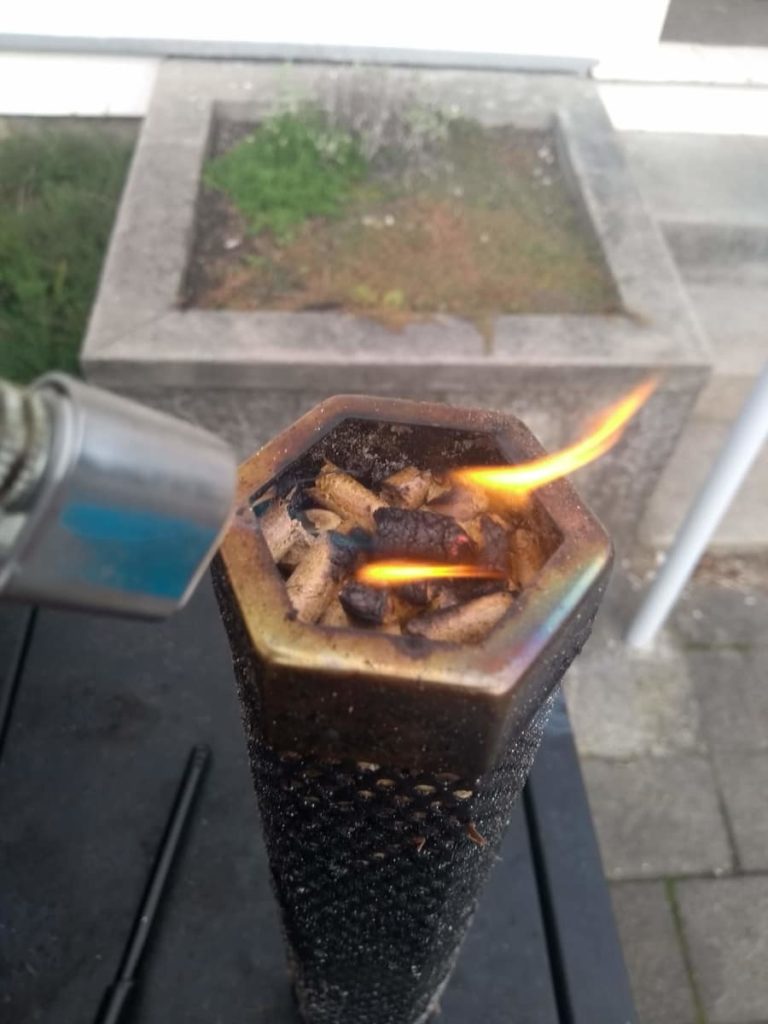
A simple gadget, using a decent propane torch/small hand-held blowtorch to get this going, you can smoke in many different objects, hooded grill, barrel, steel box, old fridge (need outflow of air), etc.
There is also a huge range of pellets out there. I prefer a flat side on the tube; it doesn’t roll around when sitting inside a smoke chamber.
3, 6, and 12″ varieties (metric approx. 75mm, 150mm, 300mm). I get about 4-6 hours from a 12-inch tube, which is plenty for an entire cold-smoking evening.
Maze Smoker
Wood dust or pellets can be used with these, these are great too like the pellet tube. With a similar application.
Burn time varies based on wood and size, normally 6-9 hours is what I get from these devices.
Smoker Generator

These are interesting inventions. I ordered one many years ago, and I’ve had a variety since then. Attaches to hot smokers or other devices, like wine barrels, old stoves (yes, I’ve seen a few sitting outside under porches), or beehive boxes (untreated wood).
It works on wood chips of specific sizes, which can be harder to get. But it does work well with standard smoking pellets.
It uses the venturi effect to pull the smoke from the smoking area. It’s hard to explain, but I can tell you this is quite a neat contraption.
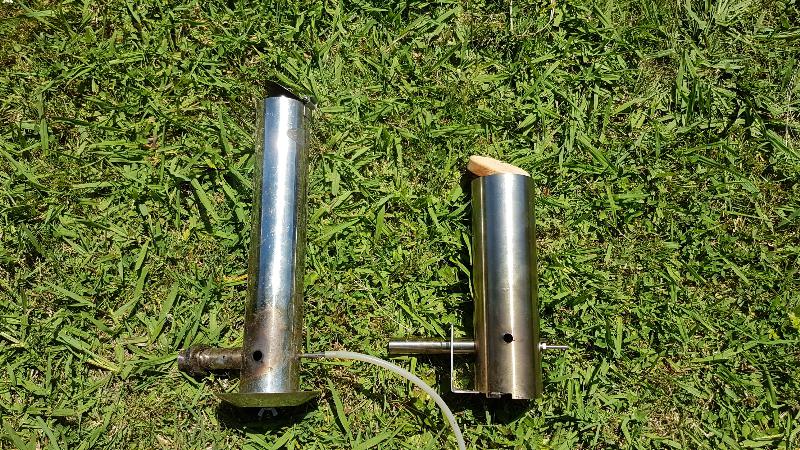
It does need power, and uses a small pump to create the venturi effect.
If you want to read more, there are a few around the market, so please find a page on them, I wrote about a few of them here.
Electric Smoker – Add-Ons
Since most electric smokers are designed to cook & smoke, certain suppliers have modified it to create external cold smoking in the central unit.
Electric cold smokers are the easiest to use since you don’t have to manage the temperature much. All you need is cool weather; it’s an easy plug-and-play option.
Wood for Smoking
Fruit woods are great for most smoking, either hot or cold. More light/medium flavor. European Oak and European Beach are the most common in the Western world.
Size and Shape matter; depending on your method, you may use sawdust, pellets, wood chips, or wood chunks – wood is a topic. I have made an easy guide on wood for smoking here.
Related Questions
What is the Best Temperature for Cold Smoking?
Under 77° Fahrenheit or 25° Celsius is the ideal temperature, meat begins to cook at 86° Fahrenheit or 30° Celsius. Depending on what is being smoked, it can take 1 to 14 days to cold smoke through to completion.
How long does it take to Cold Smoke Bacon?
Depends on the volume and size of the meat. A minimum of 15 hours of cold smoking at low temperature of 77°F / 25°C. This happens after the pork is wholly salt-cured.
What Meat is Best for Hot vs. Cold Smoking?
Non-salt cured, often low temperature-indirect hot smoking involves rendering fat, creating moist, rich, fatty meat. Pork, Beef, and Chicken usually have reasonable amounts of fat.
Other hot smoking can include a salt cure first, then either direct or indirect heat.
Cold smoking is excellent for oily fish/meat; the smoke flavor adheres to oily fish more. Fat, like pork fat for bacon complements cold smoke flavor also.
Thanks for reading; please feel free to leave any comments or advice.
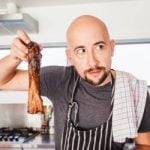
Tom Mueller
For decades, immersed in studying, working, learning, and teaching the craft of meat curing, sharing the passion and showcasing the world of charcuterie and smoked meat. Read More

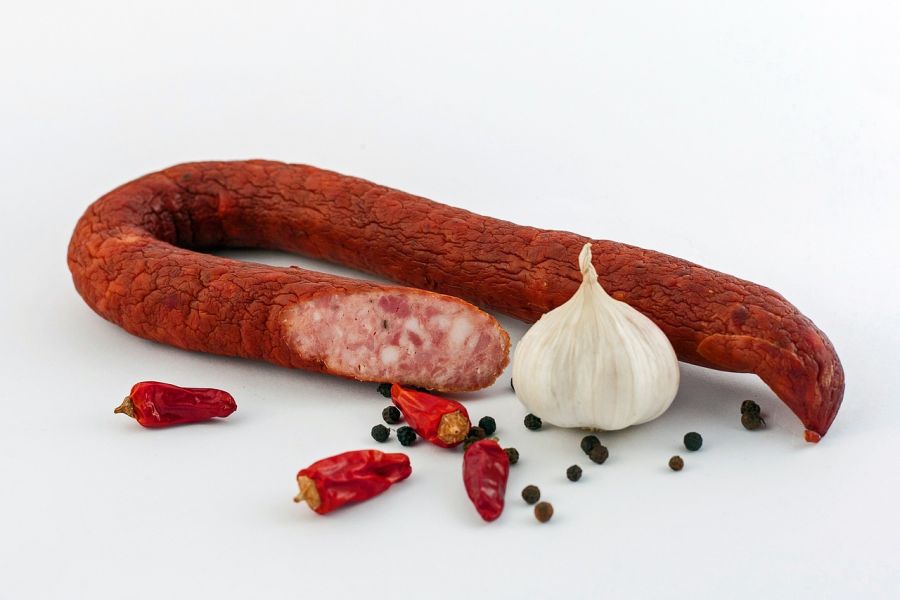
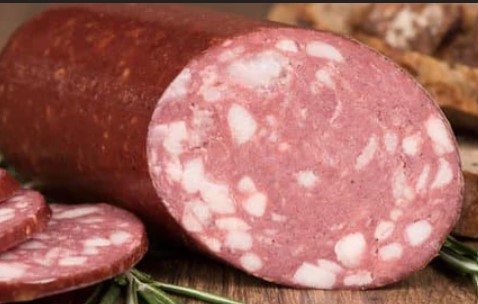
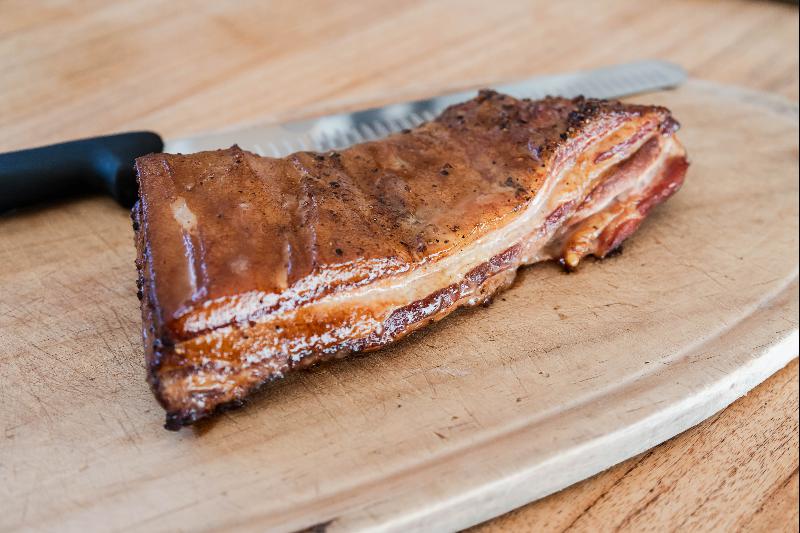
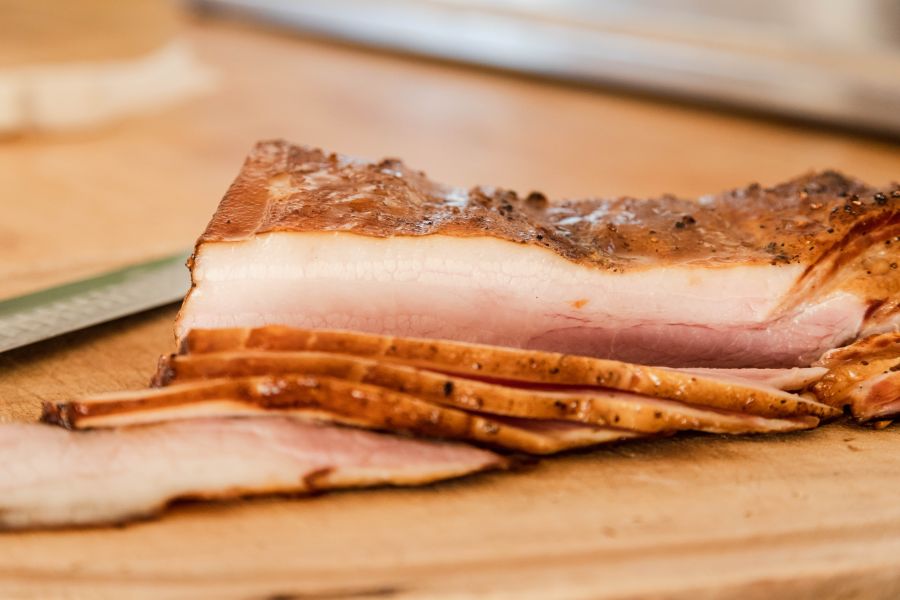
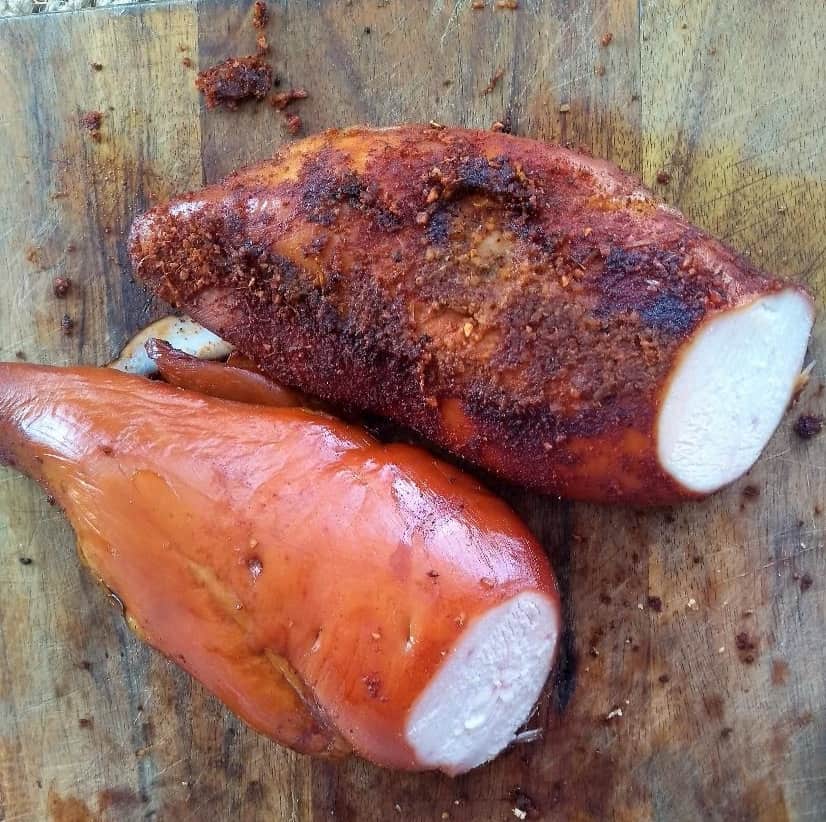
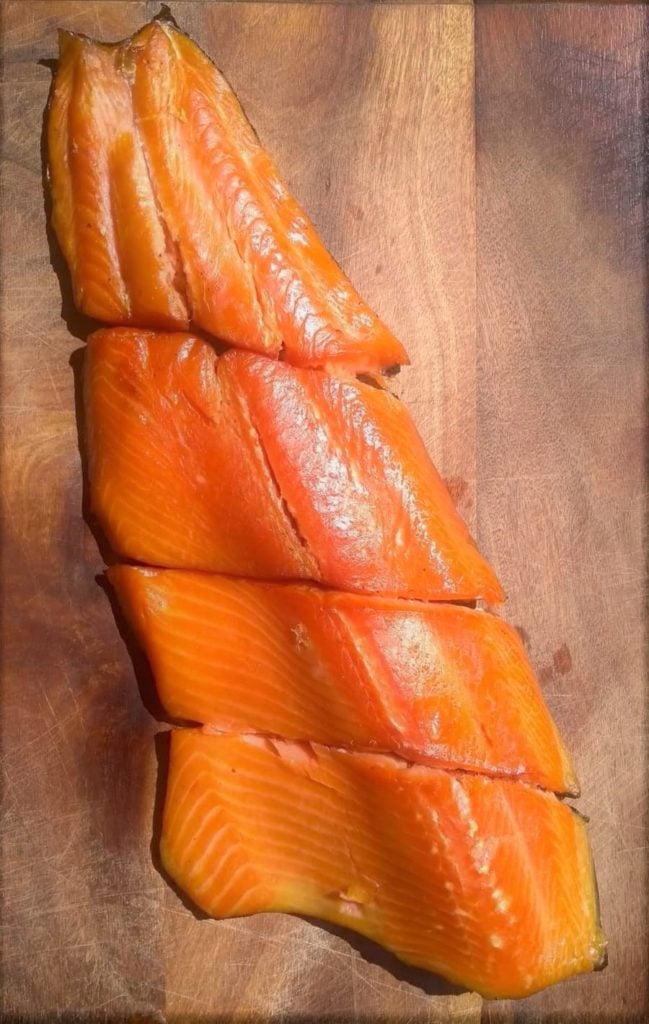
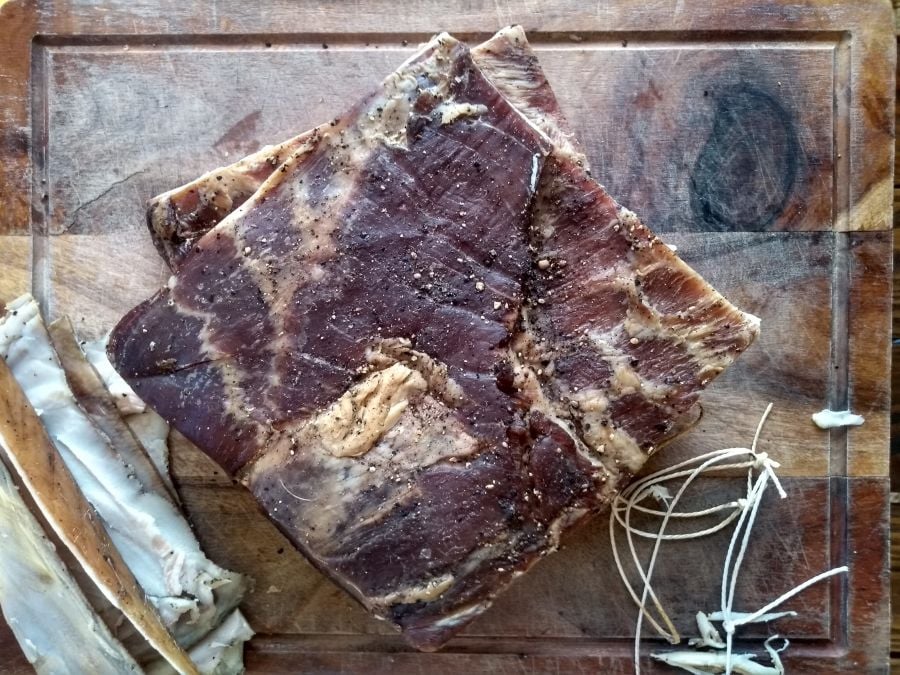
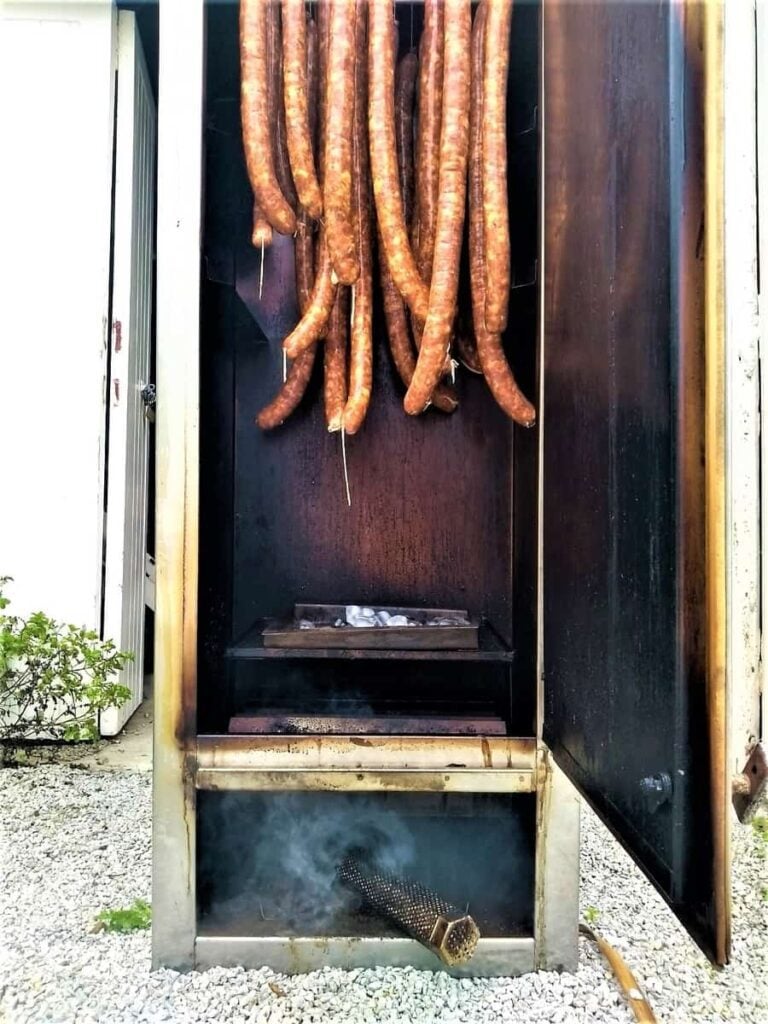
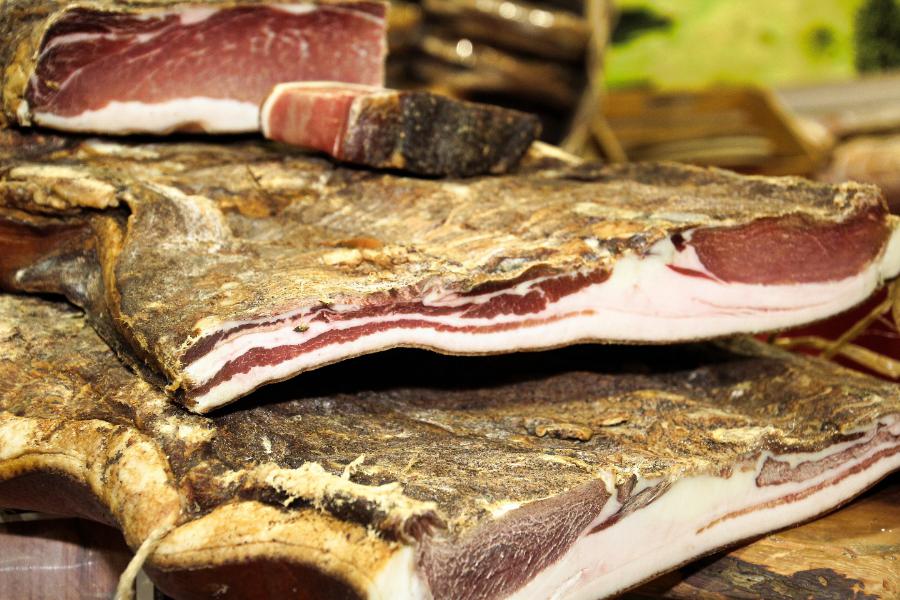
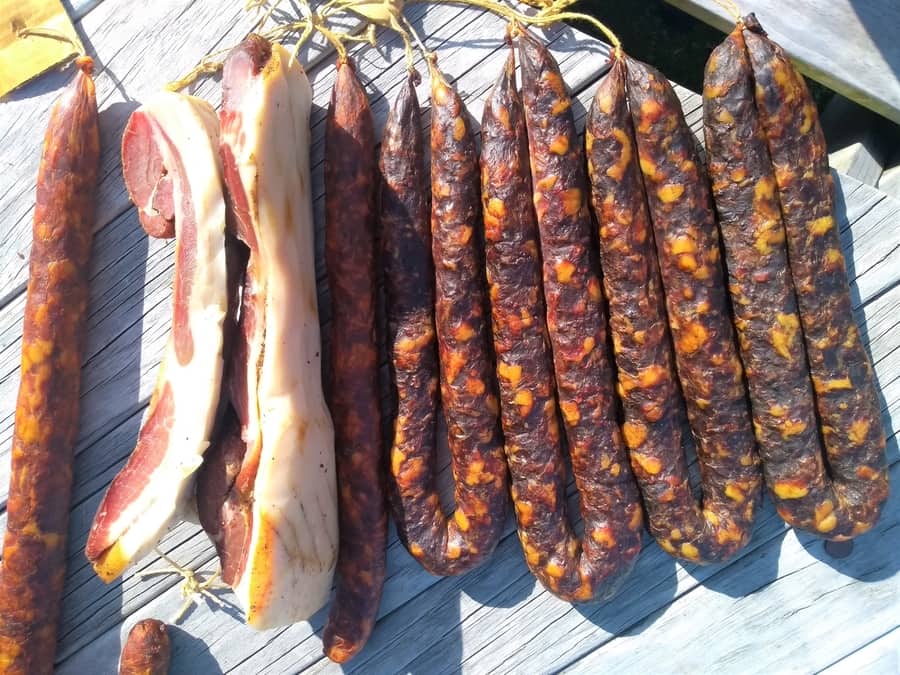
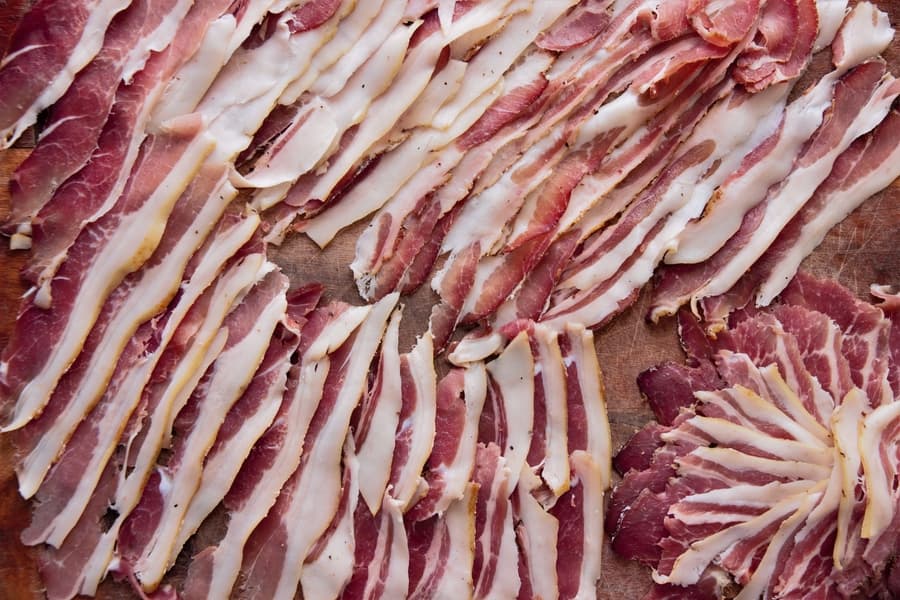
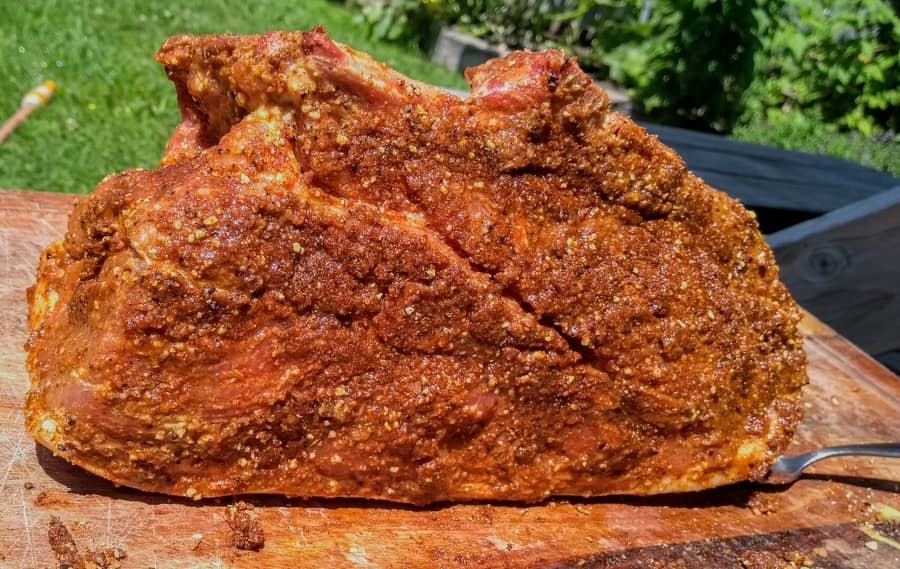
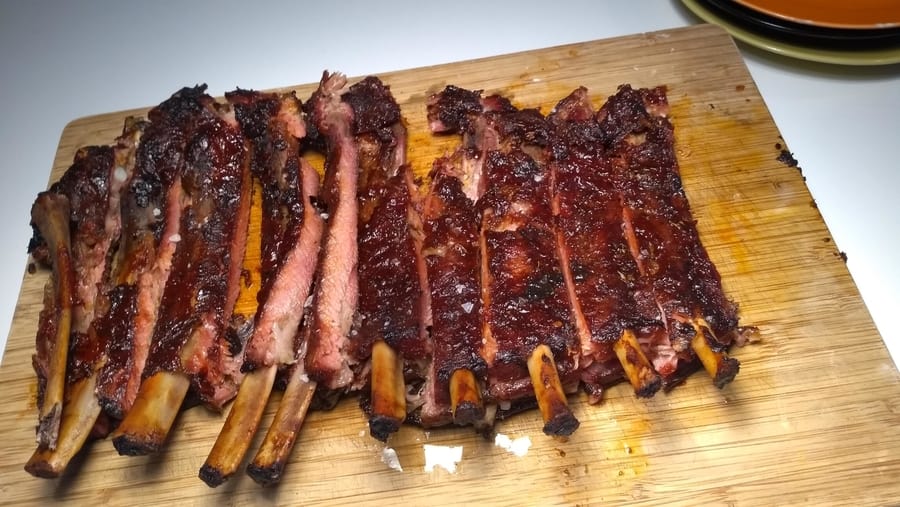
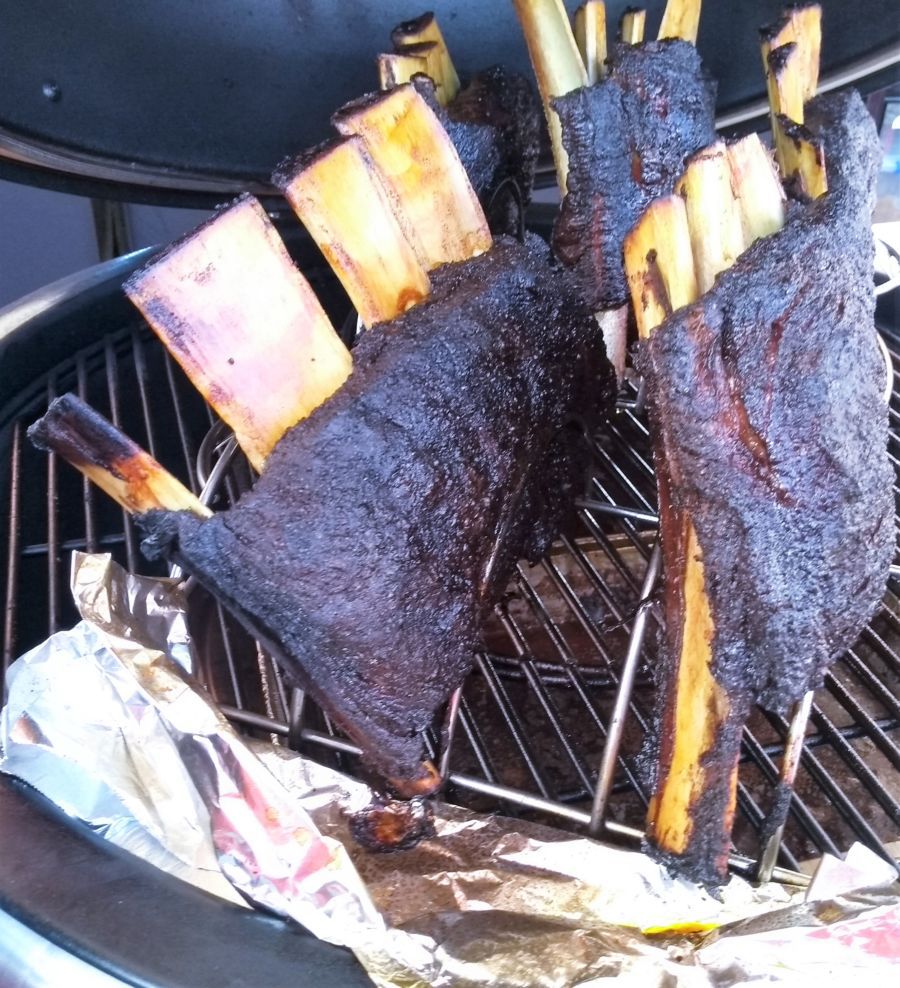
Thank you Tom,I learned a ton. I ;live in East Africa where it rarley drops below 25 degrees so hot smoking it is.
Hey Glenn thanks for stopping by!
Nice and warm! Not sure what resources you can get your hands on, you could try running a cold smoke into a fridge that has a thermostat controller to cycle it to around 10-20 Deg Cel? Depending on the fridge, may need a humidifier a bit as well. Did you want to cold smoke? Cheers Tom
When you cold smoke are you still looking for 35%weight loss
Depends on what I’m cold smoking. Generally, cold smoking is just drying with cold smoke around. If you are full salt curing the meat. So for a salt dry-cured salami that is cold smoke, I cold smoke then, of course, dry to at least 35% weight oss.
But here is the pickle that doesn’t make the rule universal, salt dry-cured bacon, I do like 20% weight loss and under 8 hours cold smoking, so it just hangs around until it hits about this. This is because I will cook it, so 35% is not needed!
Red meat vs say fish also is a pickle/confusion since you can achieve a slow down of Water Activity (which is what unwanted bacteria need) before 35% weight loss. ie. salmon I have dried/cold smoked is like 25% weight loss.
My question is, is the color of the salami any different between hot or cold smoked? I’m making hard German salami about 1 1/2” diameter casings, once cold smoked so you hang to dry or refrigerate?
Hey, hot is cooked and cold smoke. I guess by hard salami you are drying until weightloss achieved? Cold smoke is then used for protecting the drying via antibacterial and antifungal aspects.
My cooked/hot smoked salami, depending on ingredients and meat. If mainly pork it’s pink (cooked ham look).
For dry-cured salami is often darker, especially if I cold smoke.
For a Hungarian dry-cured salami I make alot, I cold smoke for 3x 6 hours sessions, then hang to dry for 35% weightloss
Cheers
Tom